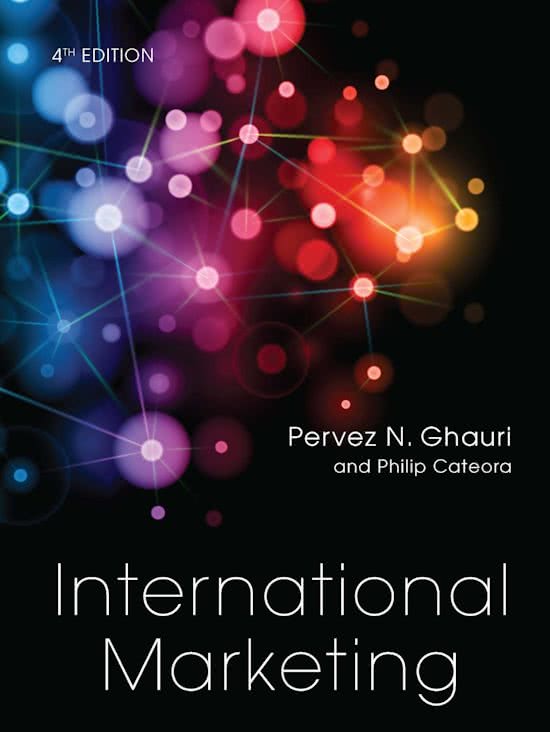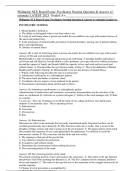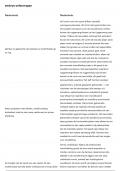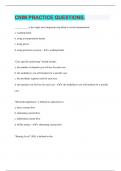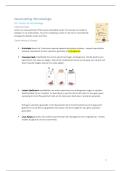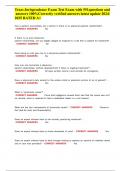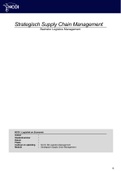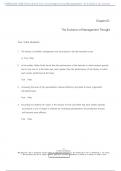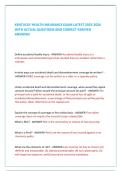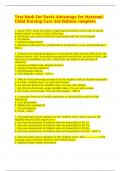Introduction and Chapter 1 – the scope and challenge of
international marketing
Marketing = “The Management Process of Identifying, Anticipating and
Satisfying Consumer Wants and Needs at a Proftt
The four P’s:
Product
Price
Promotion
Place(ment)
B2C marketing = where businesses sell to consumers (sometimes with a
retailer in between).
B2B marketing = where businesses sell to businesses.
Agents (in marketing) sell and get a commission.
The diference between international and domestic marketing is the
environment, what is the environment?
Geography and Infrastructure
Location
Climate
Topography
Transportation infrastructure
Communication infrastructure
Financial infrastructure (banks need to be secure)
Population
Political and Legal Forces
Type of government and stability
Role of the government in the economy
Opposition policies
Relationship with neighbours
Membership of international groupings
Economic Forces
GDP/GNP per capita (trends)
Income (trends)
Distribution of wealth
Inflation and trends
Exchange rates and trends
Spending and consumption patterns
,Cultural Forces
Elements of culture
Material culture
Social organisation
Religion
Language
Aesthetics (what people fnd beautiful/funny/ugly)
Education
Dimensions of culture
Power distance
Individualism vs. Collectivism
Masculinity vs. Femininity
Long-term vs. Short-term orientation
Uncertainty Avoidance (how well can people handle uncertain situations)
Levels of Technology
Distribution Structure
Transportation (to foreign market and within foreign market)
Middlemen (importers, agents, wholesalers, retailers)
Competitive Forces
Who are the competitors?
What is their market share?
What products are available?
Image and reputation
What is their distribution structure?
What are their prices?
How and where do they advertise?
International marketer’s task more complex than that of a domestic marketer
because of the added levels of uncontrollable uncertainty. - Each country
has its own set of unique uncontrollable elements.
,The inner circle represents the marketing controllables: this area is under the
control of the marketing manager.
The second circle represents the domestic uncontrollables: this area includes
home-country elements that are outside the control of the manager and that can
have a direct efect on the success of a foreign venture.
The outer circle represents the foreign uncontrollables: this area includes
foreign elements that are outside the control of the manager, that can influence
the success of a company.
To adapt and adjust a marketing programme to foreign markets, marketers
should be able to interpret the influence and impact of each of the uncontrollable
environmental elements on the marketing plan for each foreign market in which
they hope to do business.
Self-reference criterion (SRC) = considering our own conditions, values and
norms while evaluating others.
If we evaluate every situation through our SRC, we are ethnocentric (= thinking
your own culture is superior).
There are 3 diferent marketing orientations:
1. Domestic market extension orientation
Focussed on the domestic market, foreign markets are seen as secondary.
Minimal eforts are made to adapt the marketing mix to foreign marketsa
they treat like their markets like their domestic market.
2. Multi-domestic market orientation
Strong sense that country markets are vastly diferent and that market
success requires an almost independent programme for each country.
, They have a separate marketing strategy per country.
3. Global marketing orientation
Strives for efciencies of scale by developing a product, to be sold at a
reasonable price to a global market, that is somewhat the same as in the
home market. They try to have one ‘standard’ product and sell this to all
the markets that it works in and adapts it for markets that need some
adaptation of the product.
The astute marketer always strives to present products that fulfl the perceived
needs and wants of the consumer.
Developing a global awareness:
Objectivity is important in assessing opportunities, evaluating potential
and responding to problems.
Tolerance towards cultural diferences – understanding cultural
diferences and accepting and working with others whose behaviour may
be diferent from yours.
Knowledge of cultures, history, work market potentials and global
economic and social trends
EPRG schema = classifes frms by their orientation: ethnocentric, polycentric,
regiocentric or geocentric.
Degree of internationalisation to which management is committed or
willing to move towards afects the specifc international strategies and
decision rules of the frm
Chapter 3 – Geography and History: The Foundation of Cultural
Understanding
Geography = the study of earth’s surface, climate, continents, countries,
peoples, industries and resources.
Knowledge of climate and topography are very important environmental
considerations when appraising a market.
Some products or functions get afected by certain climates, marketers
must adapt.
There is a clear link between geographic location and economic growth in a
country. Some countries sufer from major calamities and are therefore
extremely poor.
The twenty-frst century has been called the century of the environment
because it was considered the most important issue in the early 2000s.
Green activists = organisations or individuals who actively want to protect the
environment.
Kyoto agreement = agreement signed by the EU, Russia and a number of
countries, determining the decrease required in pollution over the coming years.

